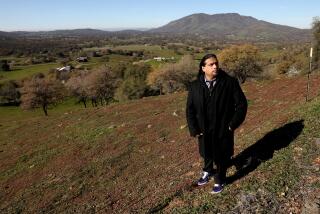City Name a Tribute to the Chumash Tribe
- Share via
What’s in a name?
In Simi Valley, it represents a victory for longtime residents who 25 years ago fought to preserve it as one of the last vestiges of the Native American Chumash tribe that once lived in the valley.
“It wasn’t always clear that our city was going to be called Simi,” historian Patricia Havens said. “But for those of us who have lived in this valley for a long time, we always believed that was what it should be called.”
The word Simi is taken from the Chumash “shimiji” which means, possibly, “clouds” or “wind” or “little white clouds that dance on the wind.”
An early developer tried to lure prospective residents to “Simiopolis.”
“Back then everything was supposed to sound grand, like Minneapolis,” Havens said. “It didn’t really fit in with what things were really like out here.”
Residents seemed to agree, and the name didn’t stick.
At incorporation, voters were given a choice between Santa Susana, the name of a small community at the east end of the valley, and Simi Valley.
“Of course Santa Susana sounds much prettier, but I’ll take historical value over a pretty name any day,” Havens said. “We were all thrilled when Simi Valley won.”
Little did they know the trouble lurking ahead.
“We soon discovered,” Havens said, “that people for some reason just refuse to say it (Simi) properly.”
Simi, old-timers and sticklers for history insist, must be pronounced suh-MEE. They cringe when they hear the less correct SEE-me or SIM-ee. Those widespread mispronunciations, Havens said, sound a little too much like derogatory names the city has been called, like “Seamy Valley.”
“When you want your city to project a positive image, the last thing you need is people saying the name wrong,” Havens said.
More to Read
Sign up for Essential California
The most important California stories and recommendations in your inbox every morning.
You may occasionally receive promotional content from the Los Angeles Times.












